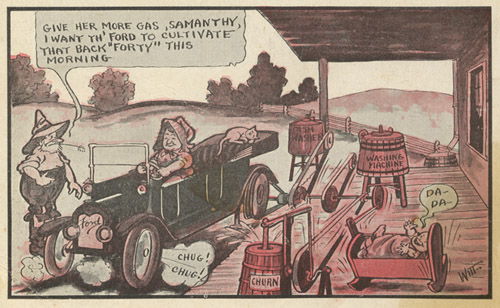|
The Pullford Company, of Quincy, Illinois, introduced a $135 tractor conversion kit in 1916 and continued in business as late as 1940. It consisted of a set of lugged steel wheels, and a rear framework and gears which allowed the Model T rear axle to be geared down to tractor speed.
These conversions were marketed to farmers who were farming with horses as a low-cost alternative to a tractor. The conversions became particularly popular in the 1920s and 1930s as the agricultural depression set in. Inexpensive Model Ts were easy to find, so the conversions became an easy and affordable way to wean farmers from horses.
Ironically, the Pullford Company got its Model T tractor conversion to market several years before Henry Ford’s own highly successful tractor, the Fordson. The Pullford Company also stayed in business longer than Fordson. So it seems that one of Henry Ford’s toughest competitors in the tractor market was his own Model T.
 |
| One of the most common non-transportation uses for the Model T by farmers was to run a belt off of a rear wheel to provide power for farm equipment such as choppers, grinders, churns, washing machines, or saws. |
| |
-- Jim McCabe, Acting Curator of Agriculture |
|

